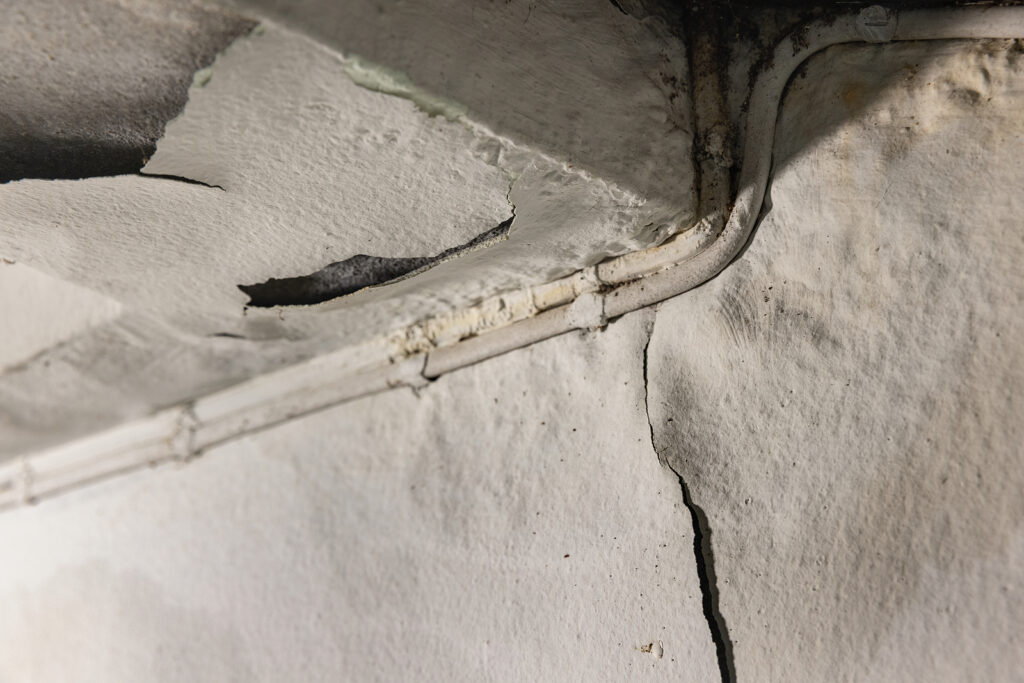Understanding Slab Leaks: Causes and Repair Options
If your water bill’s climbing and there’s no obvious leak in sight—or if you feel warmth underfoot when walking barefoot indoors—there’s a chance the problem is hiding beneath your home’s foundation.
Slab leaks are one of those plumbing issues most people don’t think about… until they’re forced to. And by then, the damage may already be setting in.

At Downey Plumbing, Heating & Air Conditioning, we’ve seen how a small, hidden leak beneath the concrete slab can turn into major water damage, mold, and even structural problems. But early detection—and understanding your repair options—can make a big difference.
Let’s break it all down: what causes slab leaks, what to look for, and how they’re repaired.
What Is a Slab Leak?
A slab leak happens when a water pipe beneath your concrete foundation starts leaking. These pipes typically run beneath or through the slab, and when one fails, water can slowly—or not so slowly—start saturating the concrete and the surrounding ground.
Over time, that moisture finds its way into your floors, walls, or even the framing of your home. That’s where it gets dangerous—not just for your plumbing system, but for your entire house.
Slab leaks can affect both hot and cold water lines, though hot water leaks are often discovered faster because of the warm spots they create.
Common Causes of Slab Leaks
There isn’t always a single reason behind a slab leak. Sometimes it’s wear and tear, sometimes it’s the way the home was built, and sometimes it’s just bad luck.
Some of the most common causes include:
1. Corrosion
Pipes beneath slabs are often made of copper, which is durable—but over time, can corrode, especially if your water is acidic or has a high mineral content. Hot water lines tend to corrode faster.
2. Abrasion
As water flows through the pipes, they expand and contract slightly. If a pipe is sitting against gravel, rebar, or even the slab itself, that movement can cause it to rub against the surface. Eventually, it wears a hole.
3. Shifting Soil or Foundation
Even small movements in your home’s foundation—due to earthquakes, settling, or soil changes—can stress pipes until they crack or break.
4. Poor Installation
If the plumbing was installed improperly from the beginning, with poor fittings or tight bends, leaks may start showing up years later.
Signs You Might Have a Slab Leak
Because slab leaks are hidden, they’re not always easy to catch. But there are some key signs to watch for:
- A sudden, unexplained increase in your water bill
- Damp or warm spots on your floor
- Flooring that starts to warp, bubble, or feel soft
- Mold or mildew smells with no visible source
- Constant sound of running water (even when all taps are off)
- Lower water pressure throughout the home
- Cracks in walls or flooring that seem to appear suddenly
None of these signs confirm a slab leak by themselves—but if a few show up at once, it’s worth calling for a professional inspection.
Why It’s Important to Act Quickly
Slab leaks aren’t just about wasted water. Over time, they can lead to:
- Foundation damage
- Structural weakening
- Mold growth inside walls and insulation
- Electrical hazards if water reaches wiring
- Costly repairs that go far beyond plumbing
The longer a leak goes unnoticed, the more damage it can cause. Early detection is your best defense against serious home repairs down the road.
How Slab Leaks Are Repaired
There’s no one-size-fits-all approach to fixing a slab leak. The best solution depends on where the leak is located, how extensive it is, and the condition of your plumbing system.
Here are a few common repair methods:
1. Spot Repair
If the leak is small and in an accessible area, the floor is opened, the pipe section is removed, and replaced. This is ideal for newer homes or when the leak is isolated and easy to reach.
2. Rerouting
If the pipes beneath the slab are older or difficult to reach, plumbers may bypass the slab entirely—rerouting new pipe through the attic or walls. It avoids cutting into the slab and is often less disruptive.
3. Pipe Lining or Epoxy Repair
In some cases, the damaged pipe can be lined with epoxy, sealing the leak from the inside without digging. This method is less invasive but not always suitable for larger leaks or severely corroded pipes.
Each approach has its pros and cons—and it really comes down to what’s best for your home, budget, and how long you plan to stay there.
Can You Prevent a Slab Leak?
You can’t prevent every plumbing issue, but you can reduce your risk. Here’s how:
- Schedule annual plumbing inspections
- Keep an eye on water pressure—too high, and it can stress your pipes
- Use a water softener if you have hard water (it slows corrosion)
- Listen for unusual water noises or changes in pressure
- Install a smart leak detection system for early alerts
And if your home is 30+ years old and still has original pipes, it may be time to evaluate the plumbing system proactively—before something breaks.
Suspect a Leak? Let’s Check It Out
Slab leaks are serious—but they don’t have to be scary. The key is catching them early, choosing the right repair strategy, and working with a team that knows what they’re doing.
If you’re seeing the signs—or just want peace of mind—call Downey Plumbing, Heating & Air Conditioning at 562-646-1221. Our experienced team can detect, assess, and repair slab leaks with minimal disruption to your home.
Protect your foundation, your comfort, and your investment.



